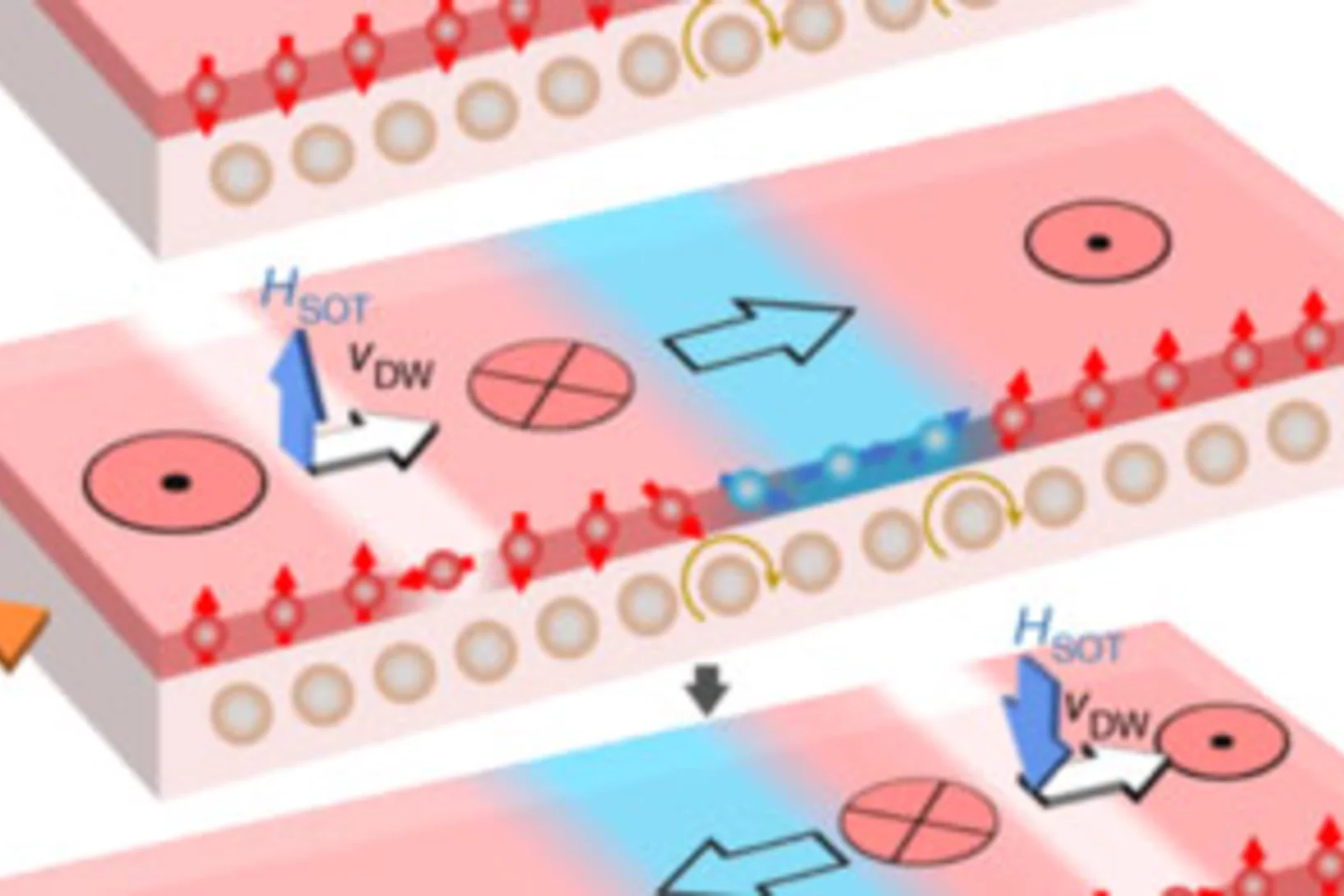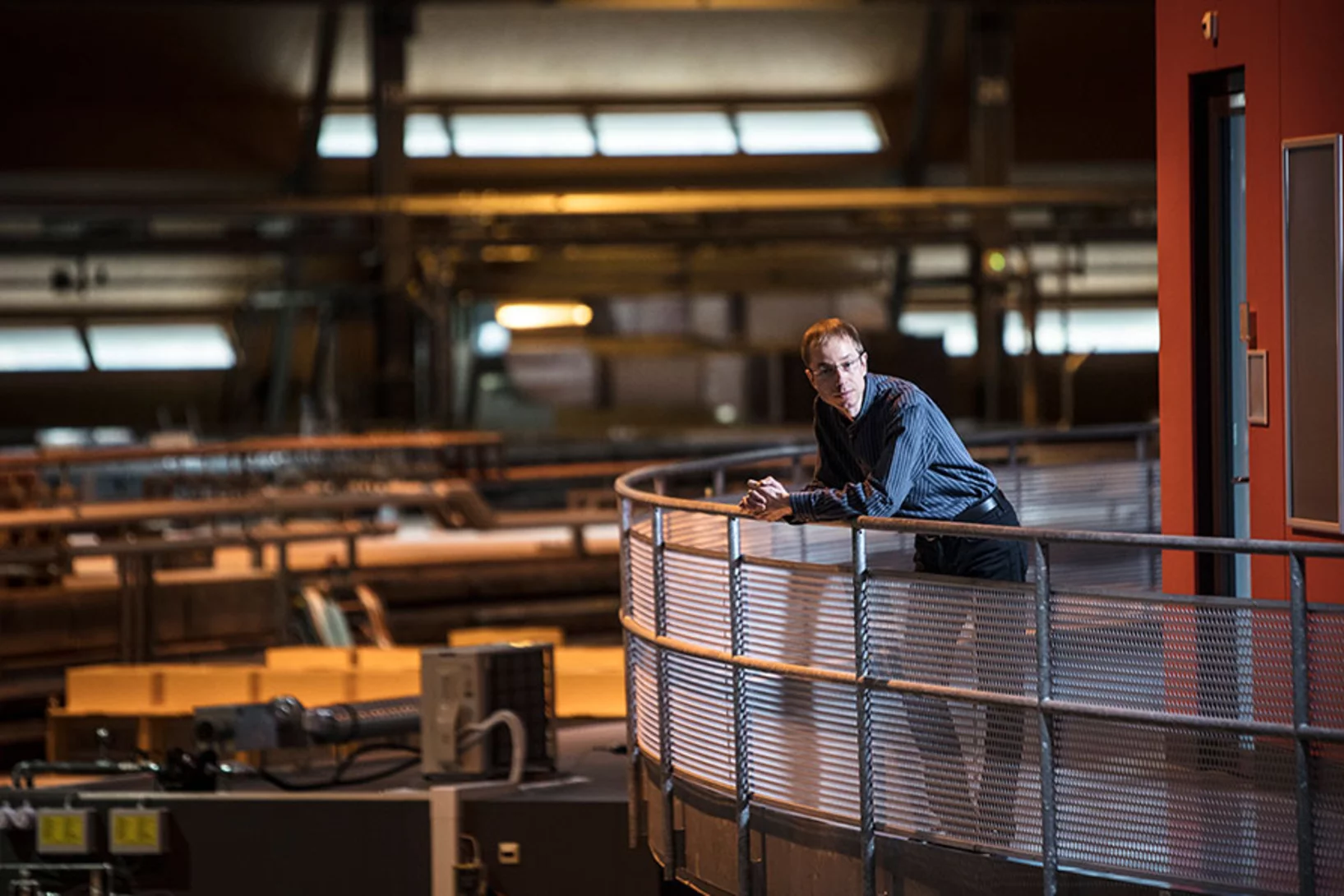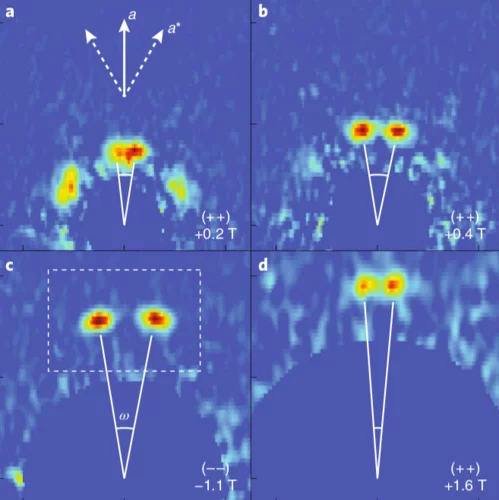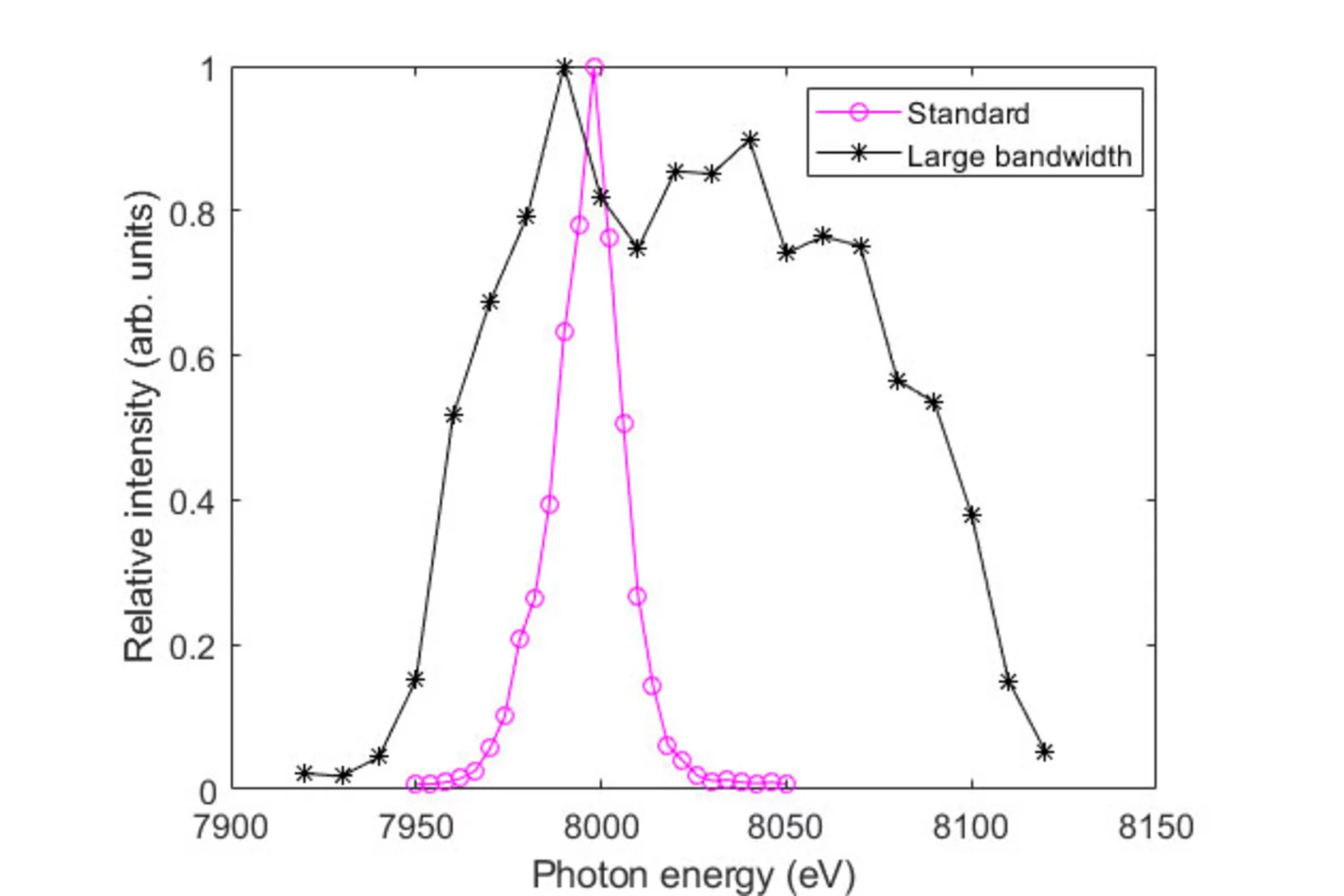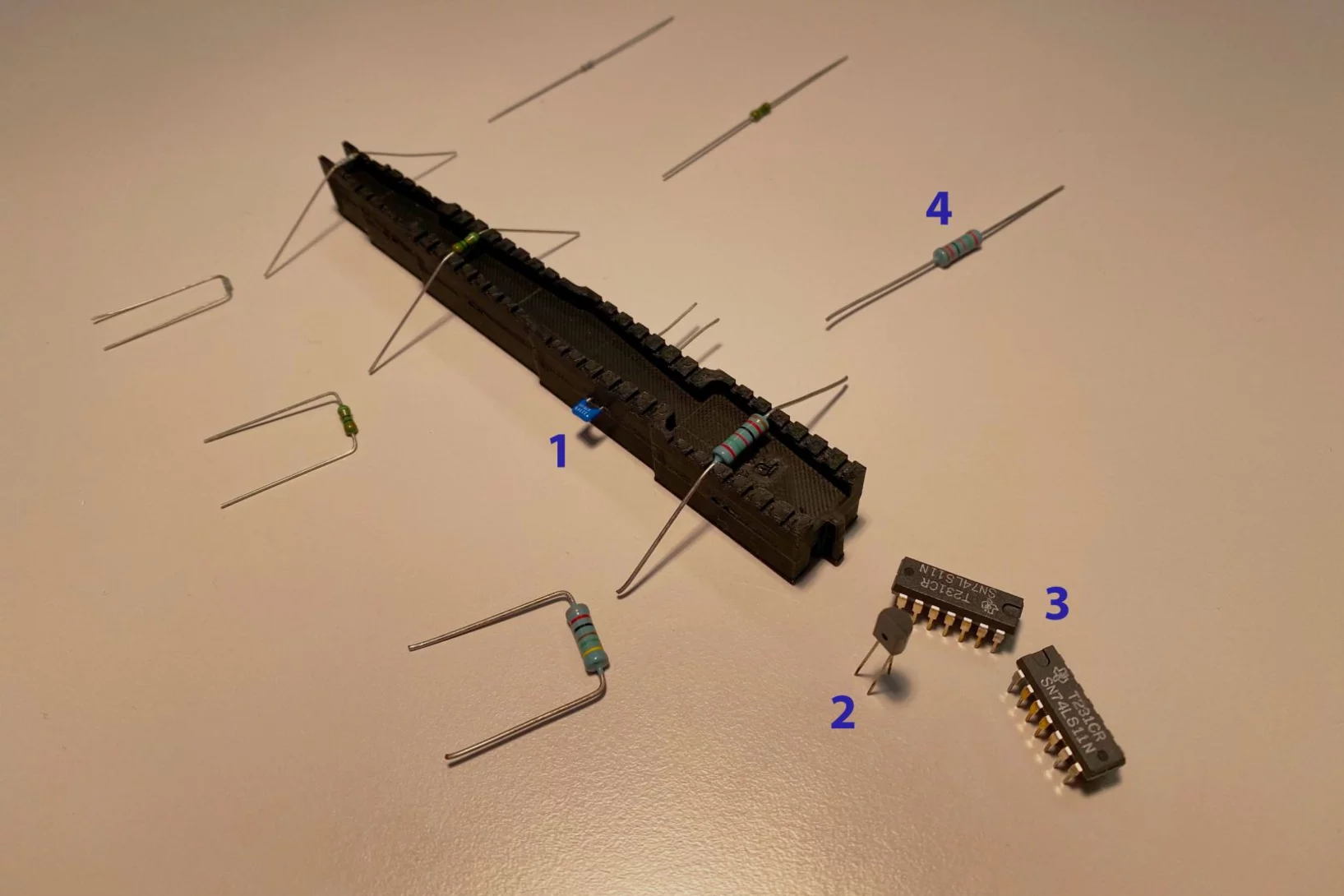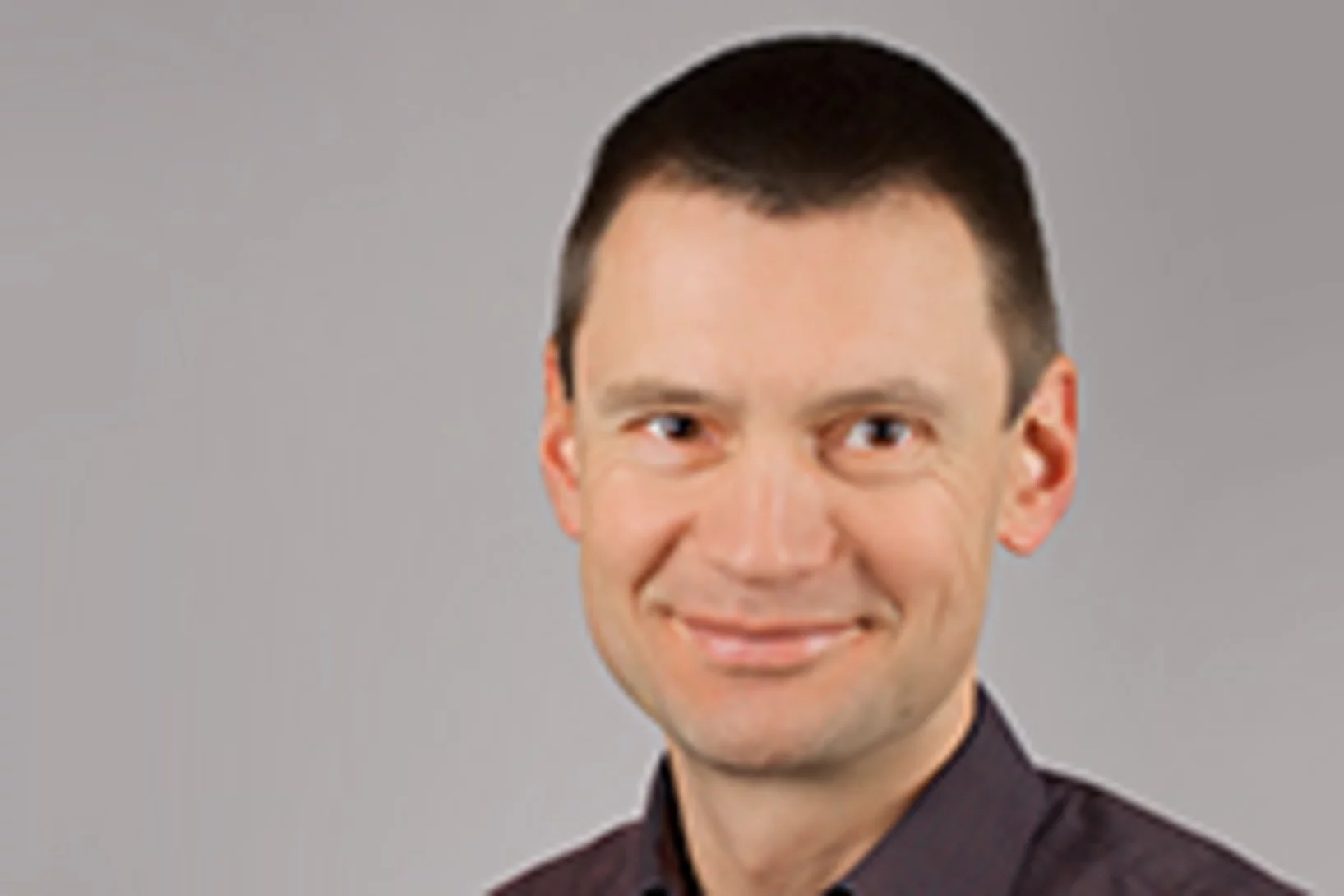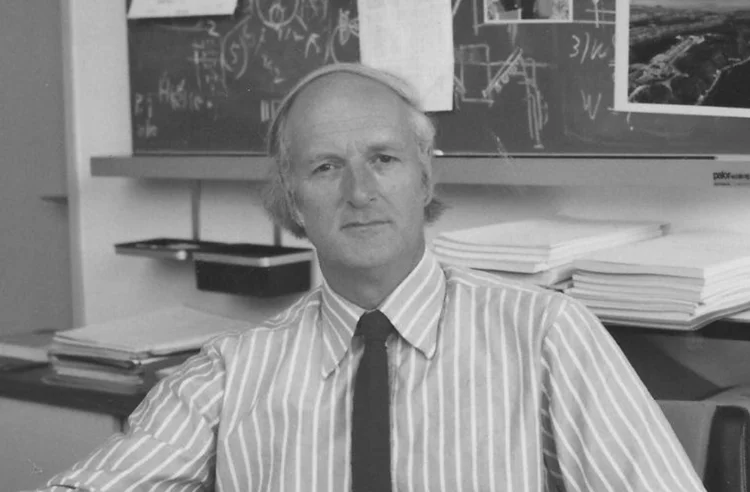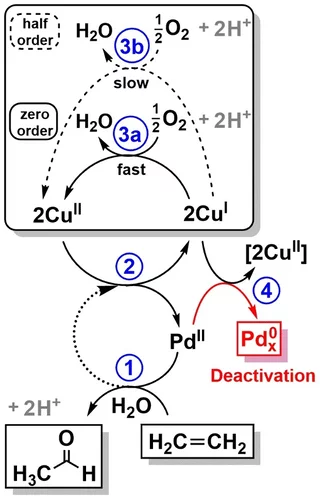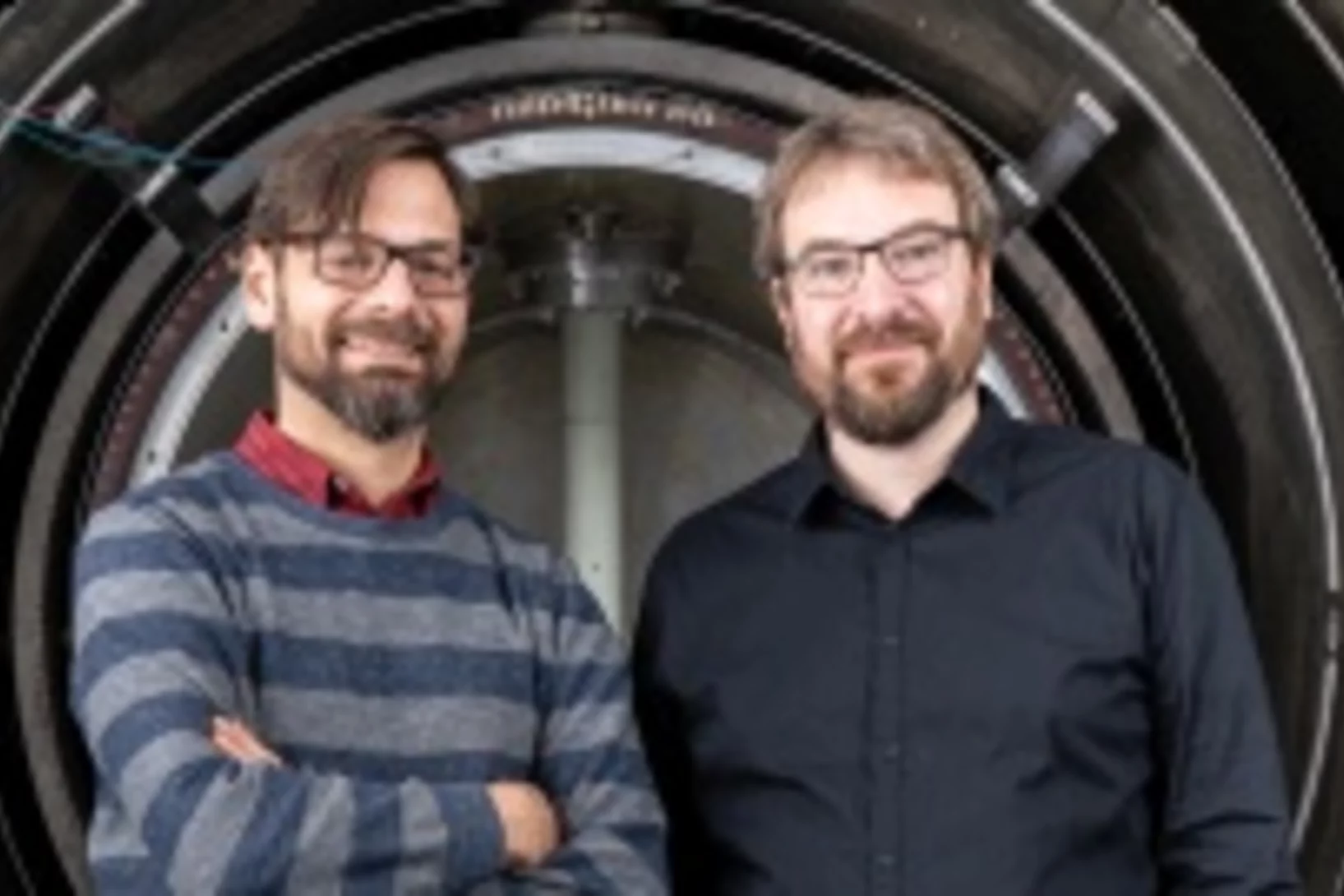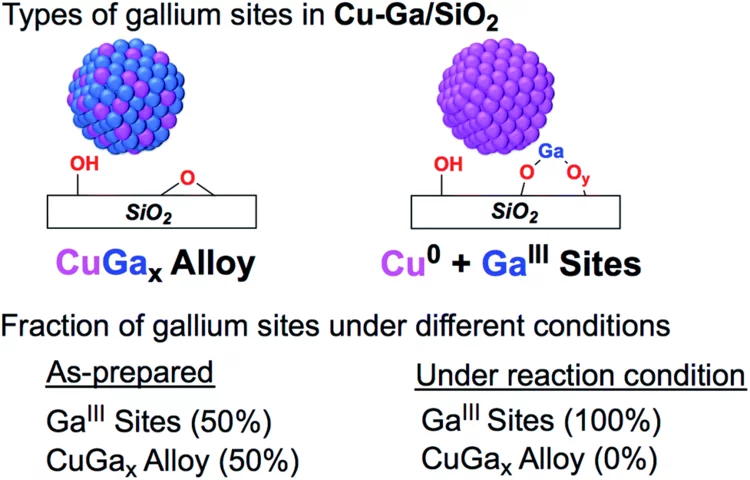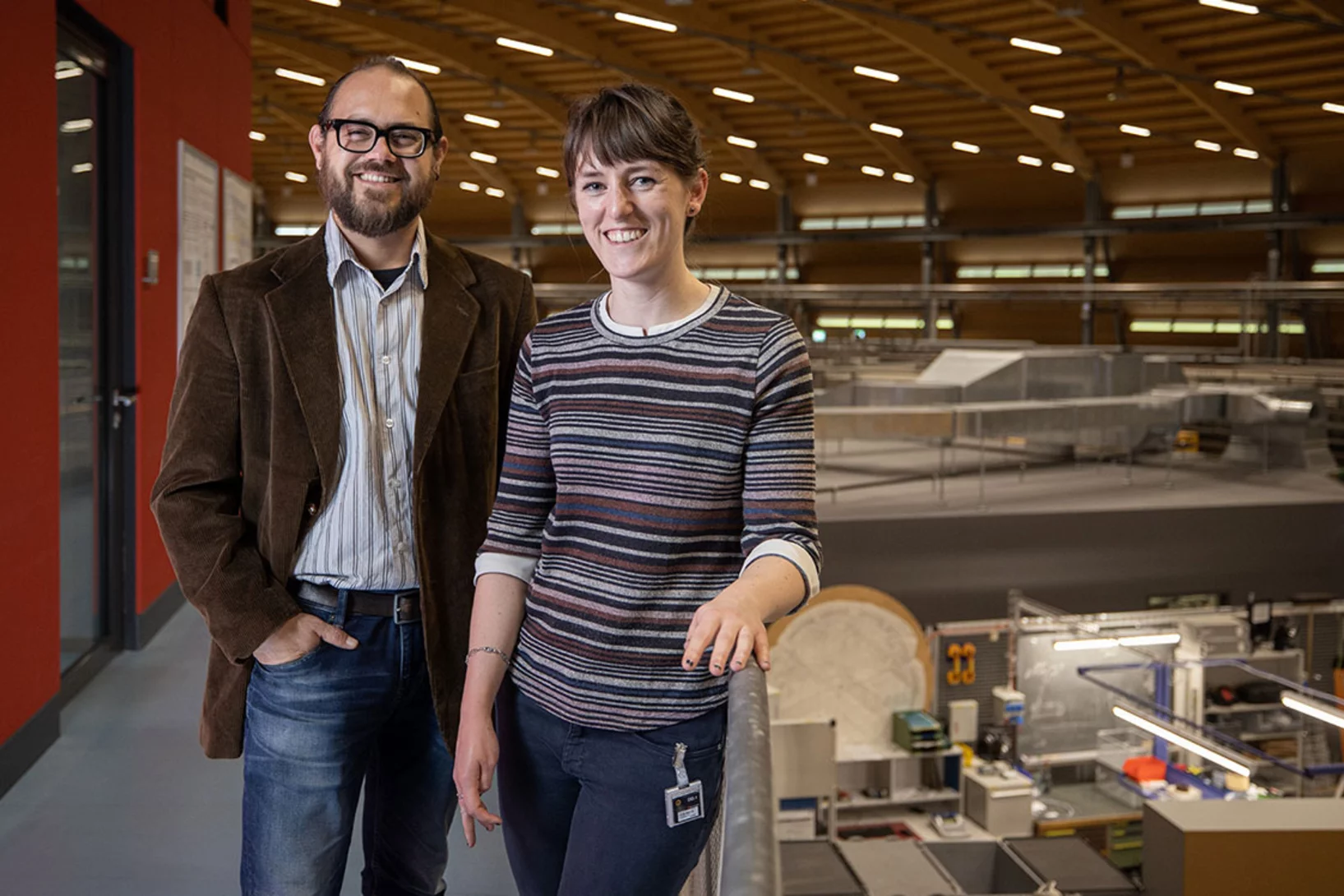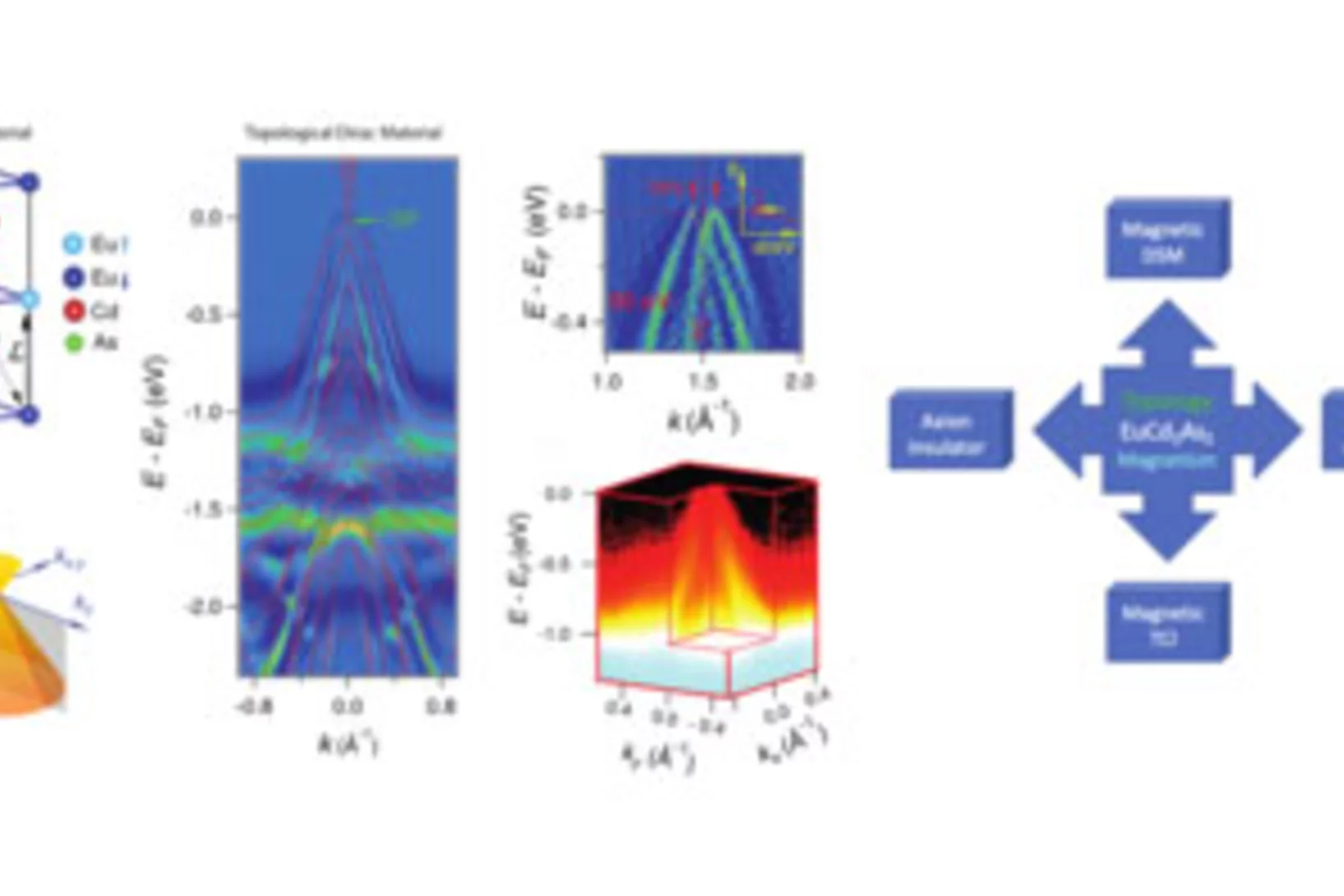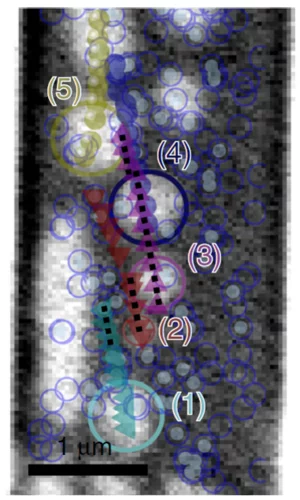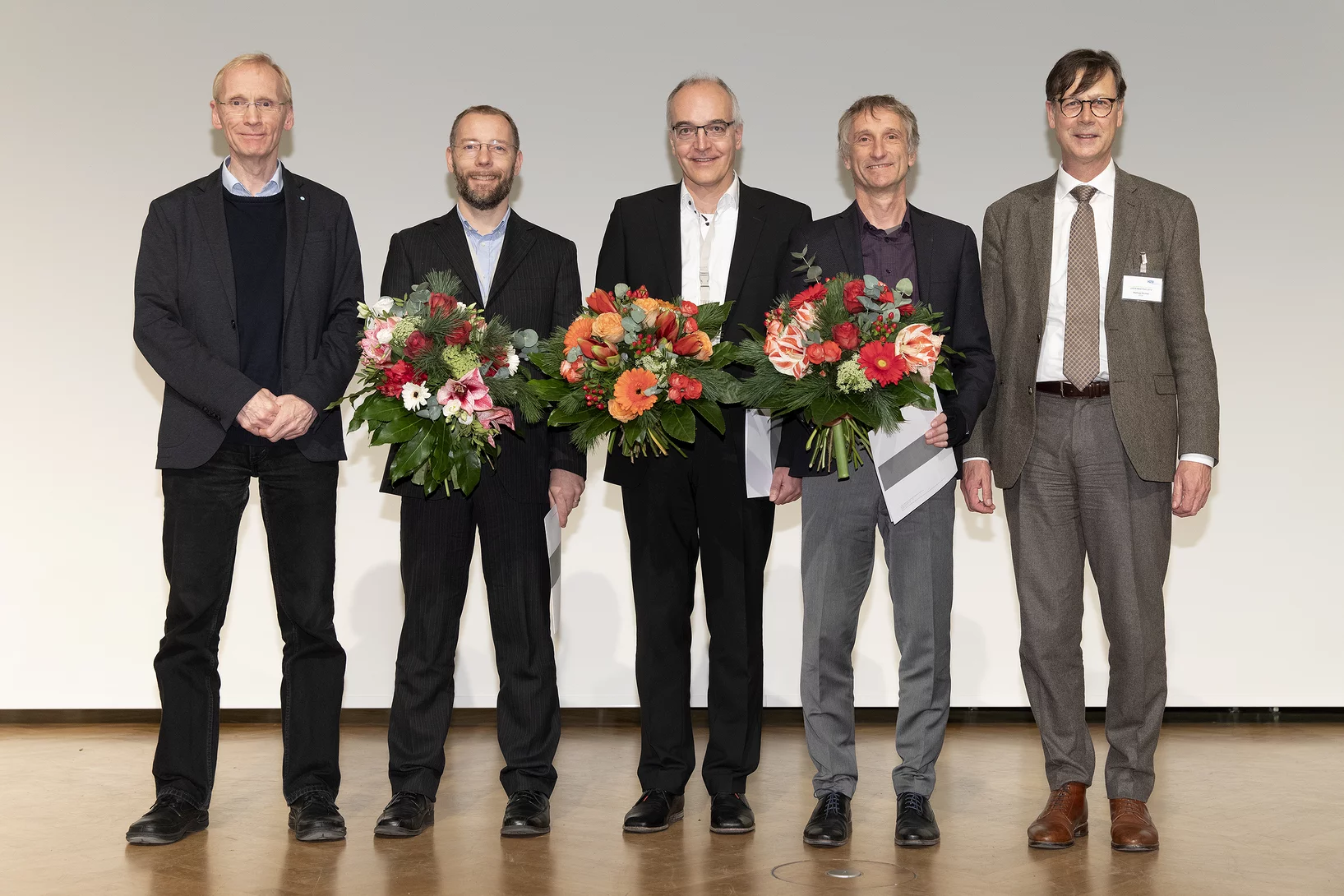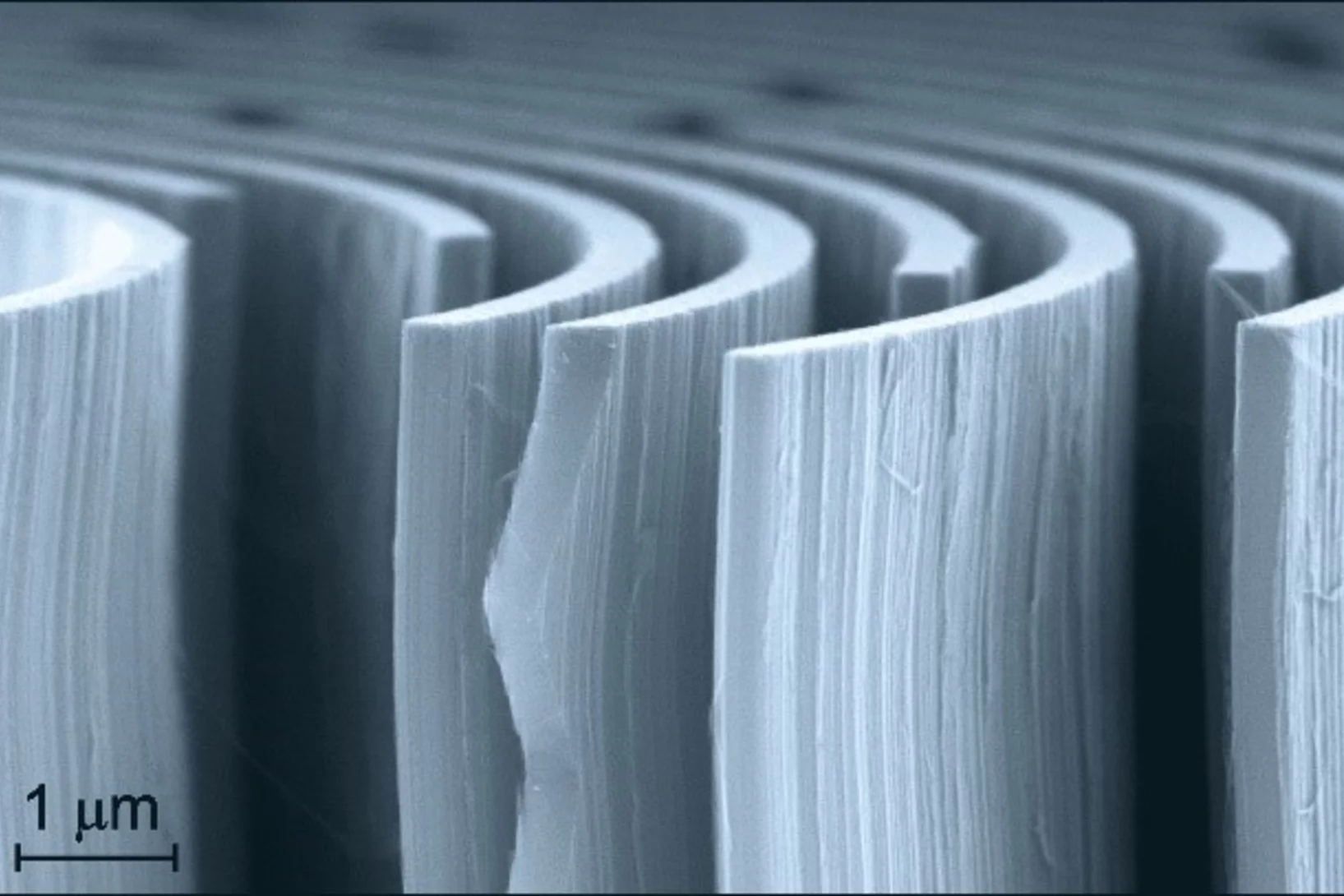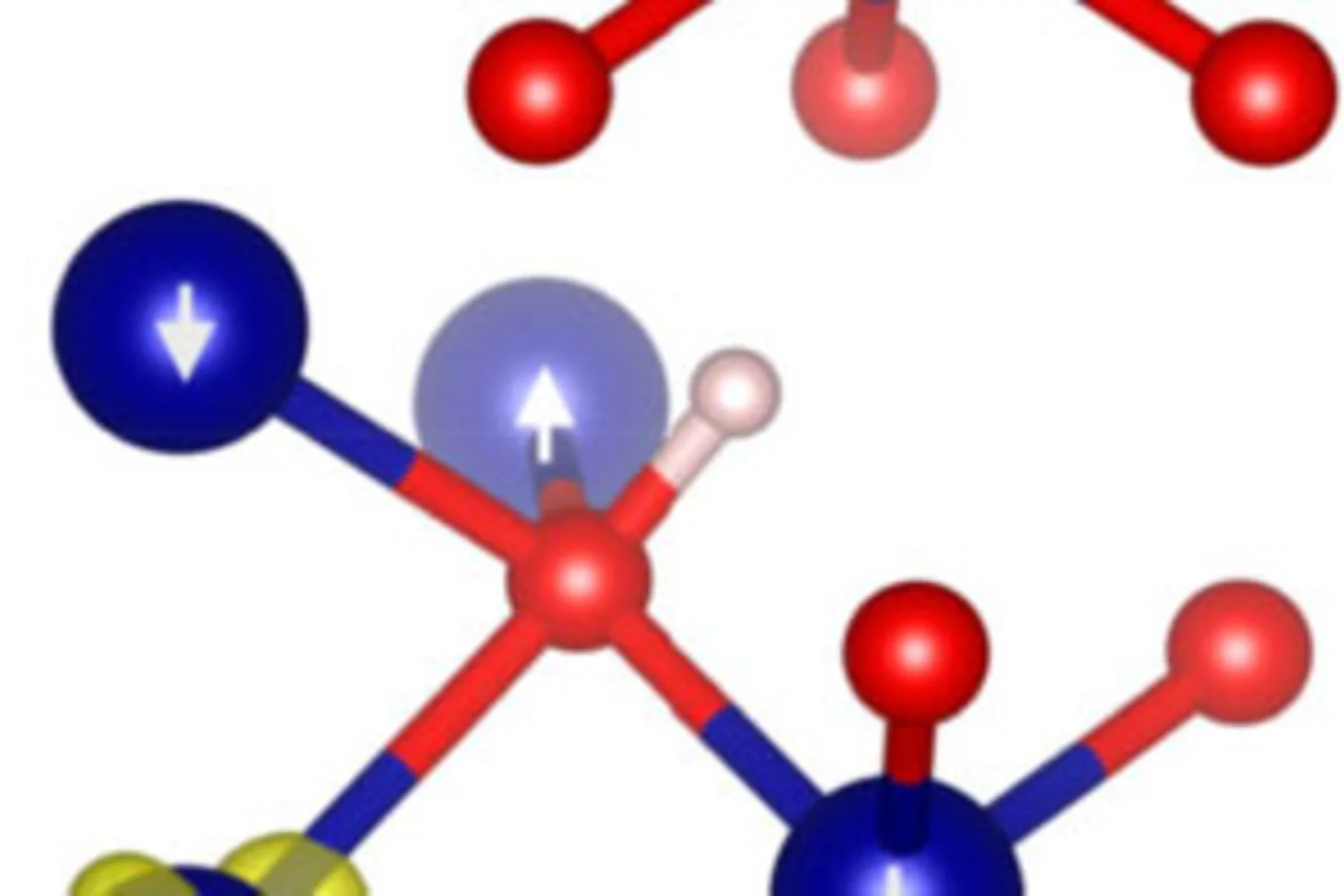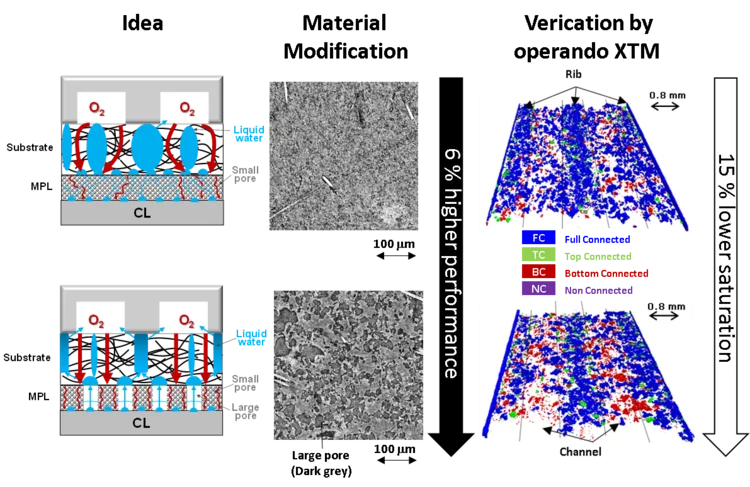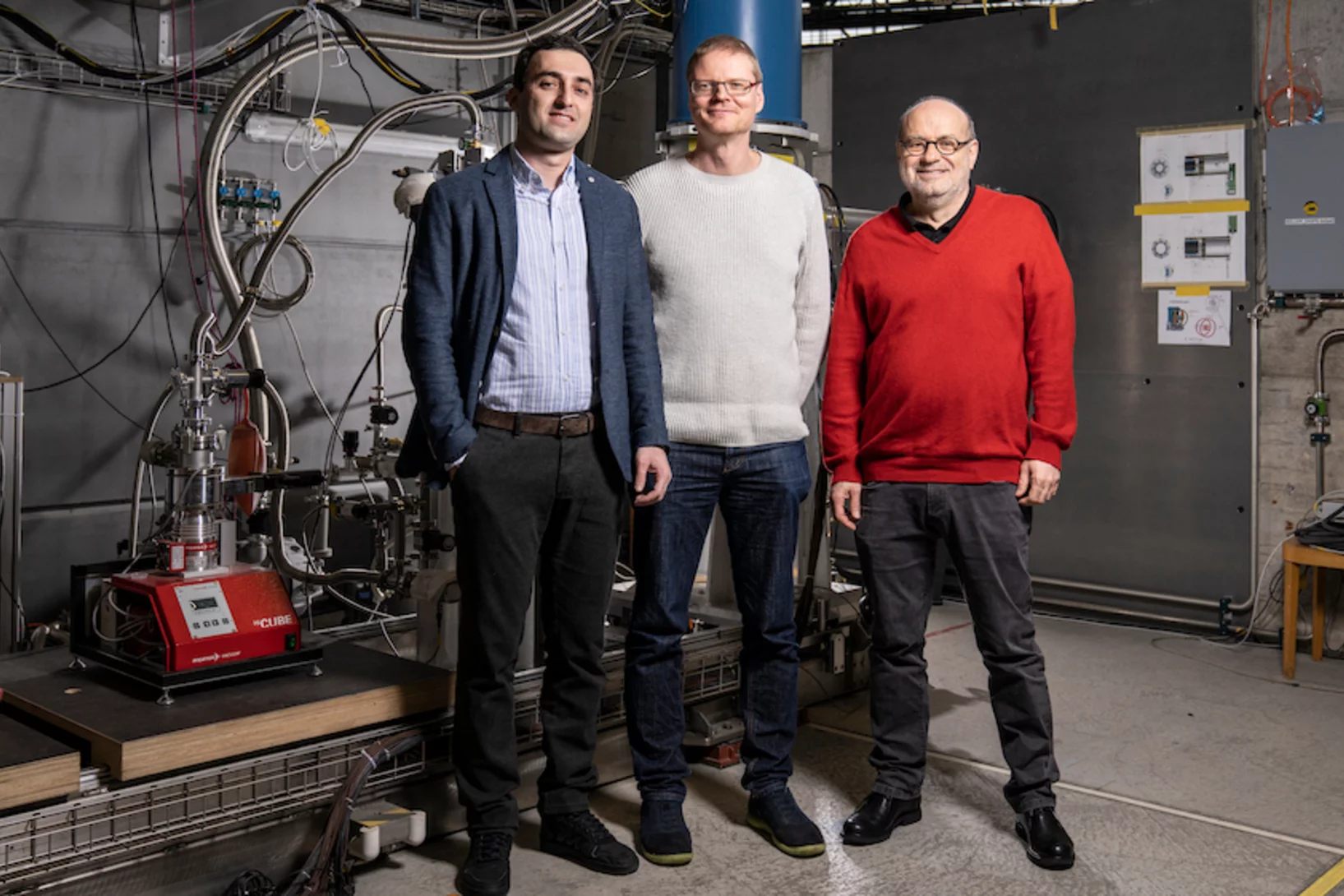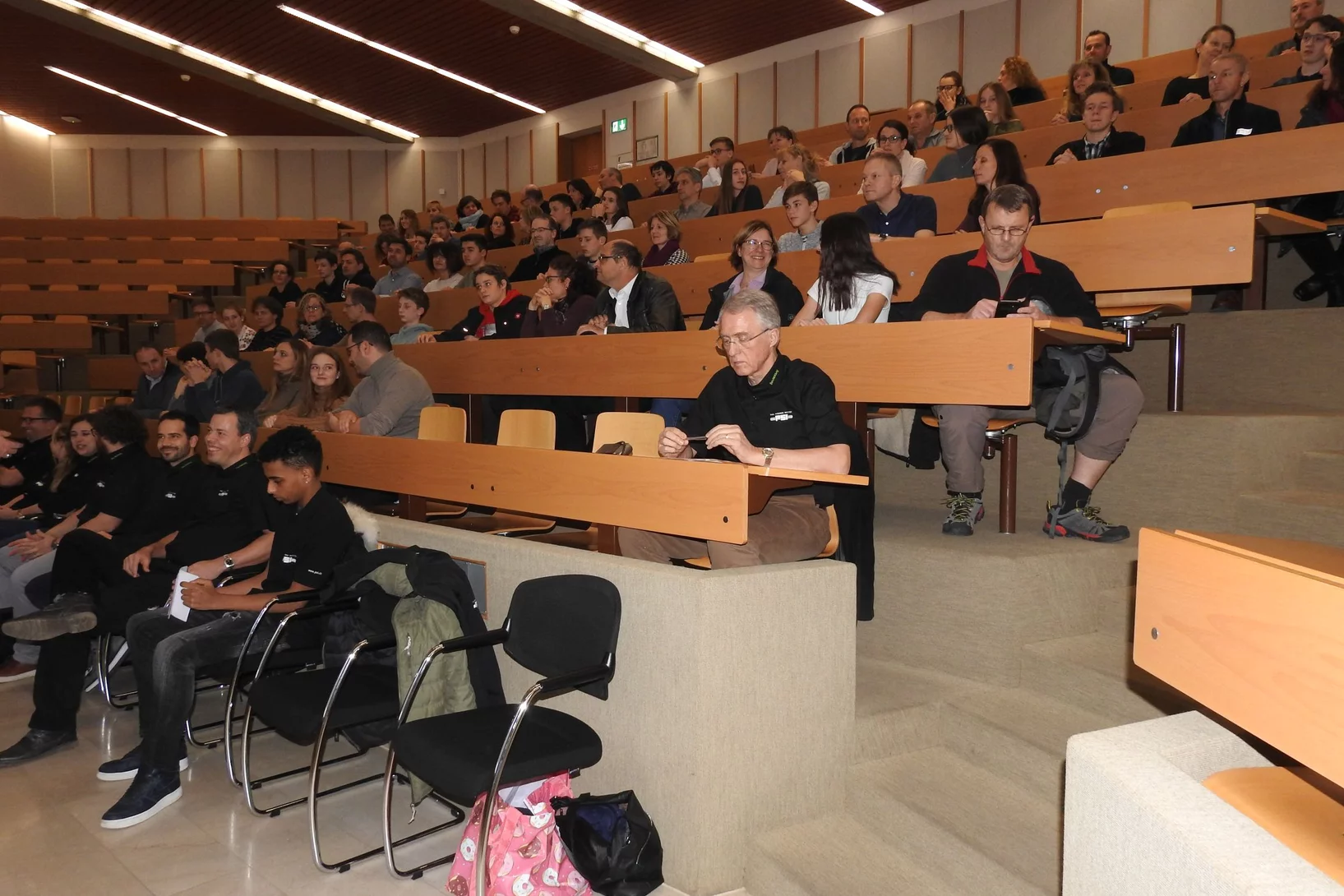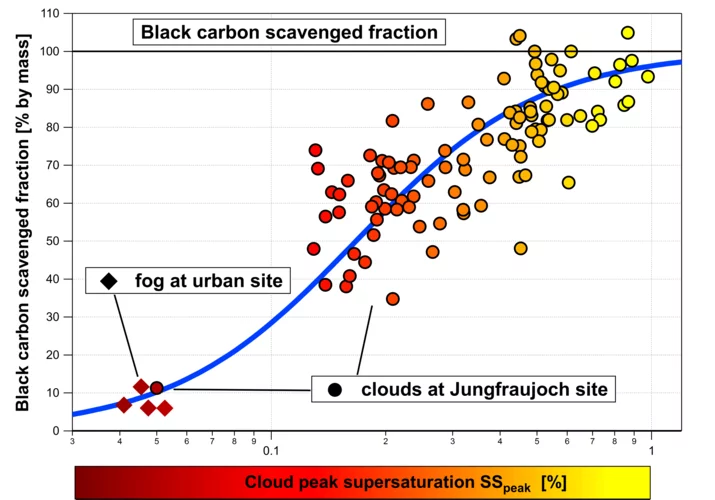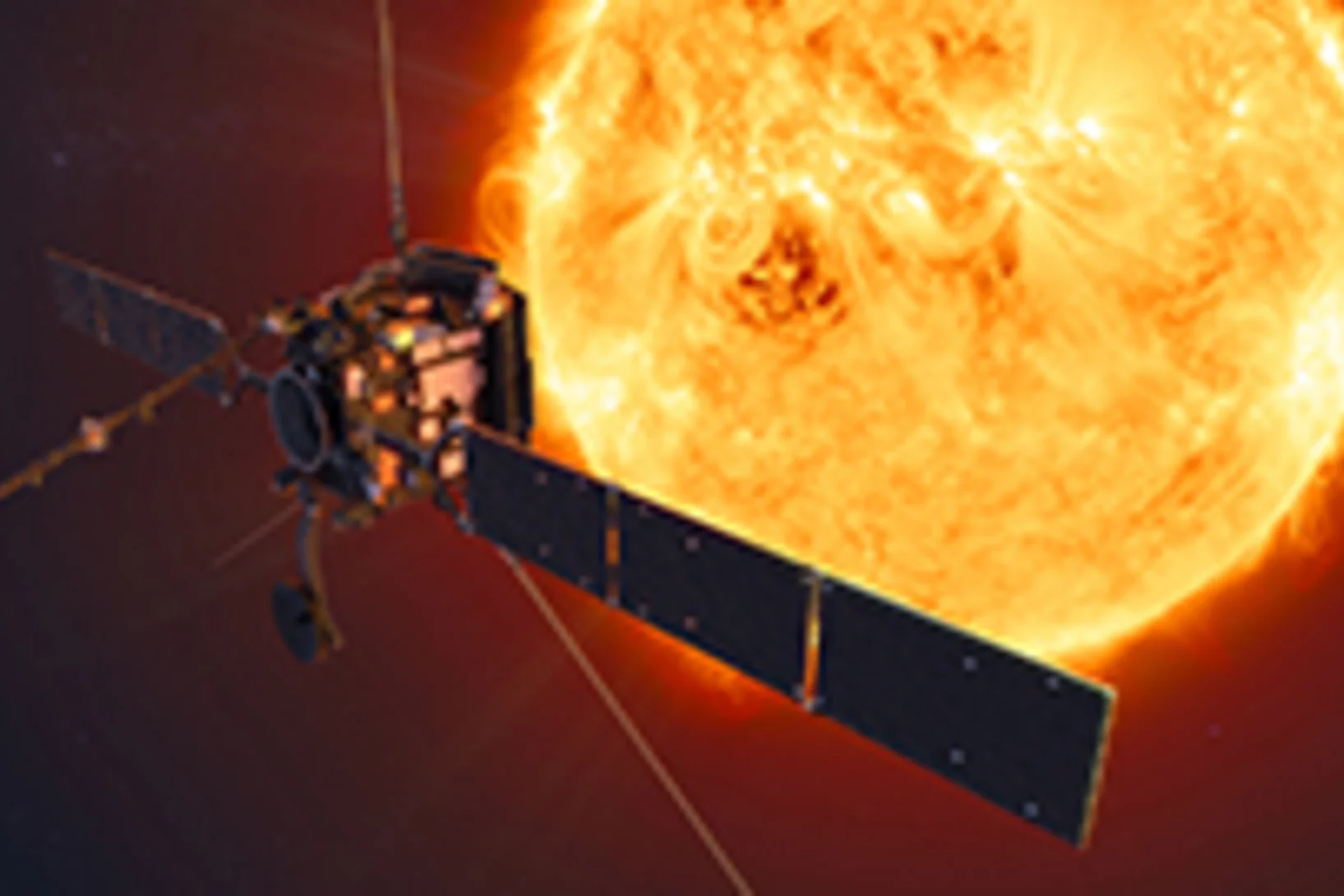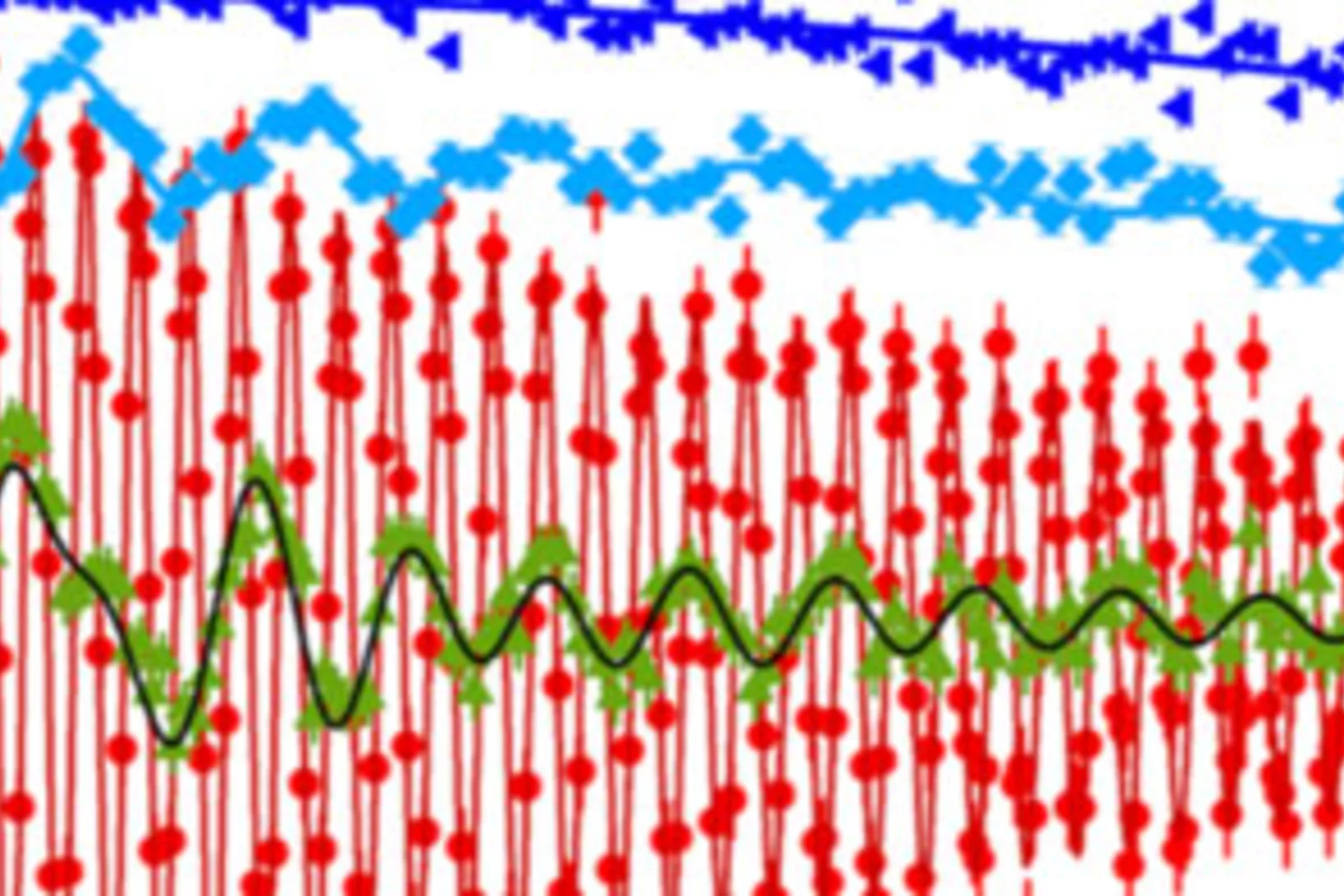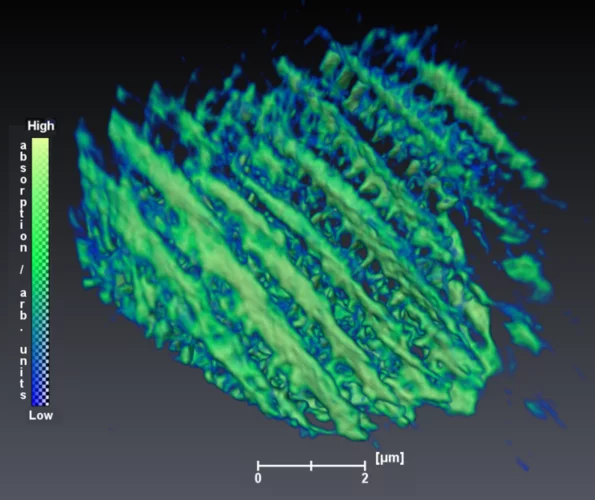Current-driven magnetic domain-wall logic
Spin-based logic architectures provide nonvolatile data retention, near-zero leakage, and scalability, extending the technology roadmap beyond complementary metal–oxide–semiconductor logic. Architectures based on magnetic domain walls take advantage of the fast motion, high density, non-volatility and flexible design of domain walls to process and store information. Such schemes, however, rely on domain-wall manipulation and clocking using an external magnetic field, which limits their implementation in dense, large-scale chips.
Nanoworlds in 3-D
Tomographic images from the interior of fossils, brain cells, or computer chips are yielding new insights into the finest of structures. These 3-D images are made possible by the X-ray beams of the Swiss Light Source SLS, together with detectors and sophisticated computer algorithms developed at PSI.
Broken time-reversal symmetry in the topological superconductor UPt3
Topological properties of materials are of fundamental as well as practical importance. Of particular interest are unconven- tional superconductors that break time-reversal symmetry, for which the superconducting state is protected topologically and vortices can host Majorana fermions with potential use in quantum computing. However, in striking contrast to the unconventional A phase of superfluid 3He where chiral symmetry was directly observed, .....
Demonstration of Large Bandwidth Hard X-Ray Free-Electron Laser Pulses at SwissFEL
We have produced hard x-ray free-electron laser (FEL) radiation with unprecedented large bandwidth tunable up to 2%. The experiments have been carried out at SwissFEL, the x-ray FEL facility at the Paul Scherrer Institute in Switzerland. The bandwidth is enhanced by maximizing the energy chirp of the electron beam, which is accomplished by optimizing the compression setup. We demonstrate continuous tunability of the bandwidth with a simple method only requiring a quadrupole magnet. The generation of such broadband FEL pulses will improve the efficiency of many techniques such as x-ray crystallography and spectroscopy, opening the door to significant progress in photon science. It has already been demonstrated that the broadband pulses of SwissFEL are beneficial to enhance the performance of crystallography, and further SwissFEL users plan to exploit this large bandwidth radiation to improve the efficiency of their measurement techniques.
4-in-1 Biegebauklotz
Dank dem 4-in-1 Biegebauklotz erleichtern wir den Elektronikern die Arbeit am Arbeitsplatz!
"Electric is already the right choice today"
An interview on automotive power systems with Christian Bauer, a scientist at PSI's Laboratory for Energy Systems Analysis who specialises in life cycle and sustainability analyses.
Symposium in memory of Jean-Pierre Blaser
Jean-Pierre Blaser (1923-2019) was one of the founders of the Swiss Institute for Nuclear Research SIN - one of the two institutions, which merged to the Paul Scherrer Institut in 1988. From 1988-1990 he was the first Director of the Paul Scherrer Institut. On the occasion of his first obit ETH Zurich and PSI organised a symposium to honour the lifetime achievement of this outstanding Swiss physicist.
Elucidating the mechanism of heterogeneous Wacker oxidation over Pd-Cu/zeolite Y by transient XAS
Unlike the homogeneous Wacker process, the understanding of the mechanism of the heterogeneous system has long remained to be superficial. Here the authors investigated the mechanism of heterogeneous Wacker oxidation over Pd-Cu/zeolite Y through transient XAS coupled with kinetic studies and chemometric analysis.
Tracking down the mystery of matter
At the ultracold neutron source at PSI, researchers have measured a property of the neutron more precisely than ever before: its electric dipole moment. That's because the search is still on for an explanation of why, after the Big Bang, there was more matter than antimatter.
Poster Campaign «Werde Wissenschaftlerin!» «Werde Ingenieurin!» «Werde Technikerin!»
Only about every fourth position in the natural sciences, technology and engineering in Switzerland is filled by a woman.[1] At PSI, the ratio of women to men in these fields is not different. That is why PSI would like to set an example and provide female role models on the International Women's Day on 8 March. On posters in Baden, Brugg and Aarau, PSI is showing female natural scientists, technicians and engineers who provide information about why they have chosen this profession and what fascinates them about their work.
The work "Elucidating the mechanism of heterogeneous Wacker oxidation over Pd-Cu/zeolite Y by
The work "Elucidating the mechanism of heterogeneous Wacker oxidation over Pd-Cu/zeolite Y by transient XAS" of Jerick Imbao (DOI: 10.1038/s41467-020-14982-x), result of a collaboration with Dr. Maarten Nachtegaal of the Paul Scherrer Institut, was highlighted by the editors of Nature Communications.
Enhanced CH3OH selectivity in CO2 hydrogenation using Cu-based catalysts generated via SOMC from GaIII single-sites
Small and narrowly distributed nanoparticles of copper alloyed with gallium supported on silica containing residual GaIII sites can be obtained via surface organometallic chemistry. This material is highly active and selective for CO2 hydrogenation to CH3OH. In situ X-ray absorption spectroscopy shows that gallium is oxidized under reaction conditions while copper remains as Cu0.
Short film of a magnetic nano-vortex
Using a newly developed imaging method, researchers were able to visualise the magnetic structure inside a material with nanoscale resolution. They succeeded in creating a short "film" consisting of seven movie frames that shows, for the first time in 3D, how tiny vortices of the magnetisation deep within a material change over time.
Emergence of Nontrivial Low-Energy Dirac Fermions in Antiferromagnet EuCd2As2
When magnetism meets topology, colorful novel states can emerge in condensed matter. It is widely believed that parity-time symmetry plays an essential role for the formation of Dirac states in Dirac semimetals. So far, all of the experimentally identified topological nontrivial Dirac semimetals possess both parity and time reversal symmetry. Since the magnetism will break time-reversal symmetry, only in special cases the Dirac states can be protected in a magnetic system. Thus, the realization of magnetic topological Dirac materials remains a major issue in the research of topological physics. In this work, the authors ascertained that the ground state of EuCd2As2 is a good candidate for magnetic topological Dirac semimetal when the spins point in the out-of-plane direction in the A-type antiferromagnetic phase. The Dirac state is protected by the combination of parity-time symmetry with additional translation operation. Moreover, when the spins deviate from out-of-plane direction, the bulk Dirac cone will open a gap, and the system develops into a novel state containing axion insulator, antiferromagnetic topological crystalline insulator, and higher order topological insulator.
Emergence of Nontrivial Low-Energy Dirac Fermions in Antiferromagnet EuCd2As2
When magnetism meets topology, colorful novel states can emerge in condensed matter. It is widely believed that parity-time symmetry plays an essential role for the formation of Dirac states in Dirac semimetals. So far, all of the experimentally identified topological nontrivial Dirac semimetals possess both parity and time reversal symmetry. Since the magnetism will break time-reversal symmetry, only in special cases the Dirac states can be protected in a magnetic system. Thus, the realization of magnetic topological Dirac materials remains a major issue in the research of topological physics. In this work, the authors ascertained that the ground state of EuCd2As2 is a good candidate for magnetic topological Dirac semimetal when the spins point in the out-of-plane direction in the A-type antiferromagnetic phase. The Dirac state is protected by the combination of parity-time symmetry with additional translation operation. Moreover, when the spins deviate from out-of-plane direction, the bulk Dirac cone will open a gap, and the system develops into a novel state containing axion insulator, antiferromagnetic topological crystalline insulator, and higher order topological insulator.
First beam test with all Mu3e subdetectors integrated
During a week of beam tests at DESY, Hamburg, we for the first time took data with the pixel, fibre and tile detectors running in a common data acquisition setup. The lessons learned are key to completion and comissioning of the complete detector readout.
Many skyrmions, one angle
Employing a tailored multilayered magnetic film, optimized for the zero-field stabilization of magnetic skyrmions, researchers have investigated the influence of the skyrmion diameter on its current-induced sideways motion, uncovering mechanisms that allow for this topological property to be controlled.
Make way for electric cars
Petrol, diesel, fuel cell or electric – which is the automobile of the future? A PSI study has examined the overall climate impact of various vehicle engines in use today and also projected it to the year 2040.
Innovation Award on Synchrotron Radiation 2019 for the development of XFEL detectors using the adaptive gain principle
The Innovation Award on Synchrotron Radiation 2019 was given to the researchers Prof. Heinz Graafsma from Desy and Dr. Aldo Mozzanica and Dr. Bernd Schmitt both from the Paul Scherrer Institute. The three physicists were honored for their contributions to the development of detectors for XFEL applications based on the dynamic gain switching principle enabling simultaneously single photon resolution and a large dynamic range. The laudation was held by Prof. Edgar Weckert from Desy. The Synchrotron Radiation Innovation Award is sponsored by SPECS GmbH and BESTEC GmbH.
MacEtch in gas phase: a new nanofabrication technology at PSI
The grating fabrication team of the X-ray tomography group has scored another record in etching technology of silicon by realizing a MacEtch process in gas phase. Ultra-high aspect ratios (up to 10 000 : 1) in the nanoscale regime (down to 10 nm) were achieved by platinum assisted chemical etching of silicon in the gas phase. The results were published in Nanoscale Horizons on February 17, 2020.
Observation of a Charge-Neutral Muon-Polaron Complex in Antiferromagnetic Cr2O3
We report a comprehensive muon spin rotation (μSR) study of the prototypical magnetoelectric antiferromagnet Cr2O3. We find the positively charged muon (μ+) occupies several distinct interstitial sites and displays a rich dynamic behavior involving local hopping, thermally activated site transitions, and the formation of a charge-neutral complex composed of a muon and an electron polaron.
Fast operando X-ray tomographic microscopy improves polymer electrolyte fuel cells
Polymer electrolyte fuel cells (PEFC) are a key technology for the decarbonization of automotive mobility. In collaboration with Toyota, it is shown by dynamic, operando X-ray tomographic microscopy, how the liquid water saturation in modified gas diffusion layer materials is reduced.
The imaging data supports the understanding of the underlying mechanisms and explains improved cell performance. Novel instrumentation at the TOMCAT beamline further improves imaging time resolution and allows for scan times as short as 0.1 s.
Toward better motors with X-ray light
Making Switzerland's road traffic fit for the future calls for research, first and foremost. In the large-scale research facilities of PSI, chemists and engineers are investigating how to improve the efficiency of motors and reduce their emissions.
A link between quantum magnetism and electronic band topology
Muon spin rotation experiments establish a quantitative link between the magnetic and topological electronic properties of the kagome magnet Co3Sn2S2 — and demonstrate effective ways for tuning these properties.
A link between quantum magnetism and electronic band topology
Muon spin rotation experiments establish a quantitative link between the magnetic and topological electronic properties of the kagome magnet Co3Sn2S2 — and demonstrate effective ways for tuning these properties.
Vertragsunterzeichnung 2020
Viele unbekannte Gesichter, Nerven und Mut. Werfen Sie einen Blick auf die 24 neuen Lernenden und 3 neuen Praktikantinnen, die in Begleitung ihrer Eltern die Lehr- oder Praktikumsverträge am 22.01.2020 unterschrieben.
Cloud droplet formation on soot particles
PSI researchers went to the Jungfraujoch research station and applied in situ measurement techniques in real clouds to investigate the ability of soot particles to form cloud droplets. This is a key process determining the atmospheric life-cycle of soot particles, which are primarily emitted by combustion engines and which have a warming effect on climate by absorbing solar radiation.
Swiss STIX X-ray telescope sets off for the sun
On 10 February, the ESA mission Solar Orbiter is scheduled to start. The Swiss X-ray telescope STIX will be launching too – with detectors developed at PSI.
Tunable anomalous Hall conductivity through volume-wise magnetic competition in a topological kagome magnet
Magnetic topological phases of quantum matter are an emerging frontier in physics and material science. Along these lines, several kagome magnets have appeared as the most promising platforms. Here, we explore magnetic correlations in the kagome magnet Co3Sn2S2. Using muon spin-rotation, we present evidence for competing magnetic orders in the kagome lattice of this compound.
Soft X-ray Laminography: 3D imaging with powerful contrast mechanisms
3D imaging using synchrotron radiation is a widely used tool that allows access to the inner structure of complex objects. An international and interdisciplinary consortium of scientists from the Swiss Light Source (PolLux and cSAXs), the Friedrich-Alexander-Universität Erlangen-Nürnberg, and the University of Cambridge developed the new 3D imaging technique of Soft X-ray Laminography (SoXL). SoXL allows for the investigation of thin and extended samples while taking advantage of the characteristic absorption contrast mechanisms in the soft X-ray range, providing 3D information with nm spatial resolution.

